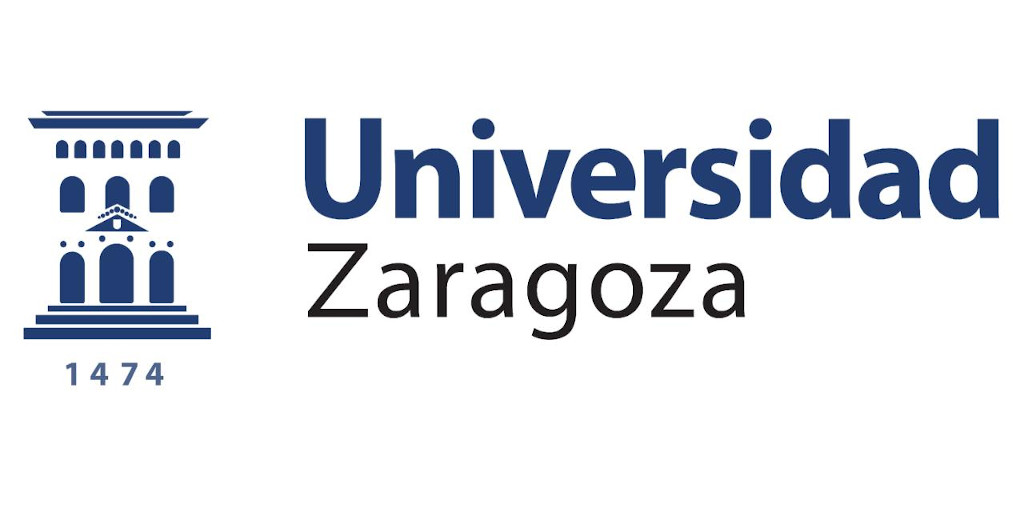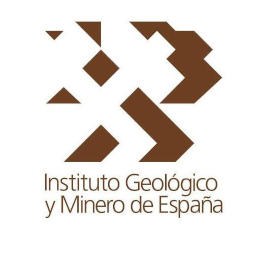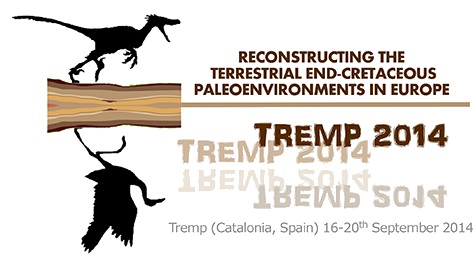On behalf of the Organizing Committee we cordially invite you to attend the congress entitled “Reconstructing the Terrestrial end-Cretaceous Paleoenvironments in Europe”, from September 16-20th, 2014.
Tremp is located in one of the most famous areas known for its geology and remarkable outcrops. Also, the continental Tremp formation contains a unique and continuous record of the 5 My preceding the K/Pg (Cretaceous/Paleogene) extinction event. This record hosts important vertebrate, invertebrate and plant paleontological sites that are key to understanding changes in the Maastrichtian Paleoenvironments of Europe.
Aims and scope
This congress is a multidisciplinary meeting devoted to recent paleontological and geochronological advances, both in the marine and continental records, which allow envisaging the Maastrichtian and its boundaries under a global and integrated scope.
The terrestrial environmental proxies for the European continental record can now be compared with faunal and floral successions. This is a first step to understand how paleoenvironmental changes interacted with life on Earth during the last five million years of the Mesozoic in Europe. This will also assist to better clarify the role of the K/Pg extinction event and how the ensuing recovery took place.
In this context the congress will provide excellent opportunities for participants to present and share new data, hypothesis and research directions. The aim of the congress is to generate debate topics between specialists and discuss correlations schemes (geochronologic, paleontologic, geochemical) among the various paleogeographic areas. The organizers outlined various significant topics that hopefully will be of your interest.
- Geology and geochemistry of the paleoenvironmental changes.
- Biostratigraphy and geochronology. The Cretaceous-Paleogene boundary.
- Marine changes. Correlation with the terrestrial record.
- Successions and paleobiogeography of vertebrate and invertebrate faunas.
- Climatic and vegetation trends.
The Organizing Committee is planning a comprehensive congress with multidisciplinary scientific program including plenary conferences and communications. Participants will also have the opportunity to explore the geologic and paleontologic record of the Tremp basin by means of two fieldwork excursions. The field trips will include visits to important scientific localities of chronostratigraphic and paleontologic interest such as various continental exposures in the Tremp basin (including stratigraphic sections with the Cretaceous-Paleogene boundary), the Coll de Nargó area (with multiple nesting horizons of dinosaurs) and the Fumanya area (with important and large outcrops with dinosaur footprints).
Tremp is located in one of the most famous areas known for its geology and remarkable outcrops. Also, the continental Tremp formation contains a unique and continuous record of the 5 My preceding the K/Pg (Cretaceous/Paleogene) extinction event. This record hosts important vertebrate, invertebrate and plant paleontological sites that are key to understanding changes in the Maastrichtian Paleoenvironments of Europe.
Aims and scope
This congress is a multidisciplinary meeting devoted to recent paleontological and geochronological advances, both in the marine and continental records, which allow envisaging the Maastrichtian and its boundaries under a global and integrated scope.
The terrestrial environmental proxies for the European continental record can now be compared with faunal and floral successions. This is a first step to understand how paleoenvironmental changes interacted with life on Earth during the last five million years of the Mesozoic in Europe. This will also assist to better clarify the role of the K/Pg extinction event and how the ensuing recovery took place.
In this context the congress will provide excellent opportunities for participants to present and share new data, hypothesis and research directions. The aim of the congress is to generate debate topics between specialists and discuss correlations schemes (geochronologic, paleontologic, geochemical) among the various paleogeographic areas. The organizers outlined various significant topics that hopefully will be of your interest.
- Geology and geochemistry of the paleoenvironmental changes.
- Biostratigraphy and geochronology. The Cretaceous-Paleogene boundary.
- Marine changes. Correlation with the terrestrial record.
- Successions and paleobiogeography of vertebrate and invertebrate faunas.
- Climatic and vegetation trends.
The Organizing Committee is planning a comprehensive congress with multidisciplinary scientific program including plenary conferences and communications. Participants will also have the opportunity to explore the geologic and paleontologic record of the Tremp basin by means of two fieldwork excursions. The field trips will include visits to important scientific localities of chronostratigraphic and paleontologic interest such as various continental exposures in the Tremp basin (including stratigraphic sections with the Cretaceous-Paleogene boundary), the Coll de Nargó area (with multiple nesting horizons of dinosaurs) and the Fumanya area (with important and large outcrops with dinosaur footprints).
LUGAR Tremp, Lleida, Cataluña, España



















